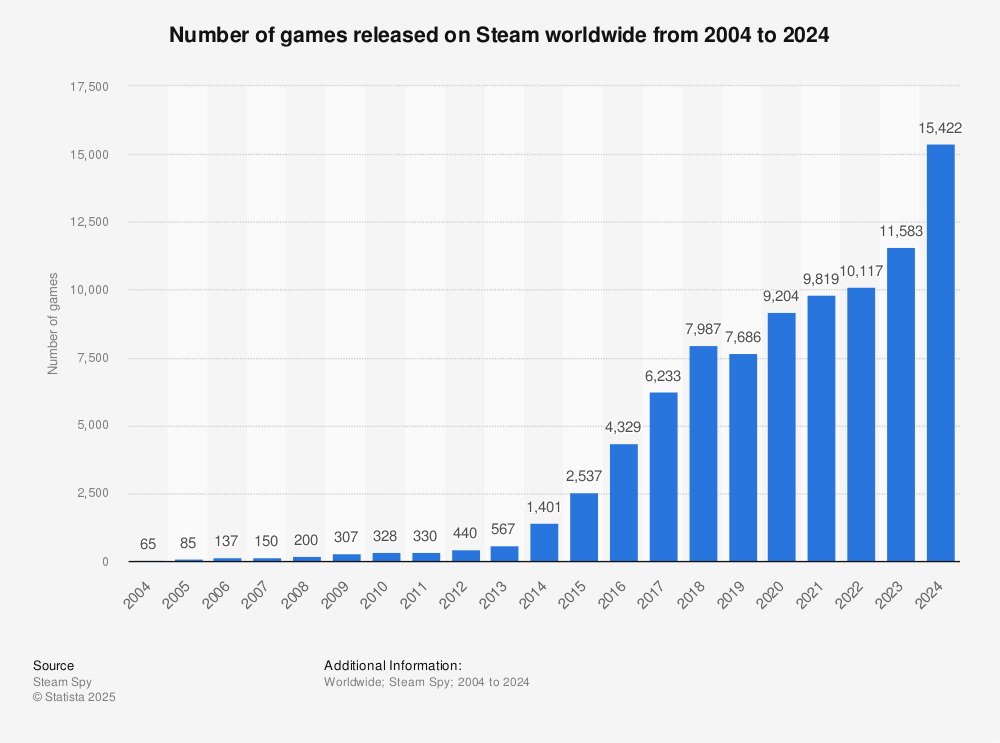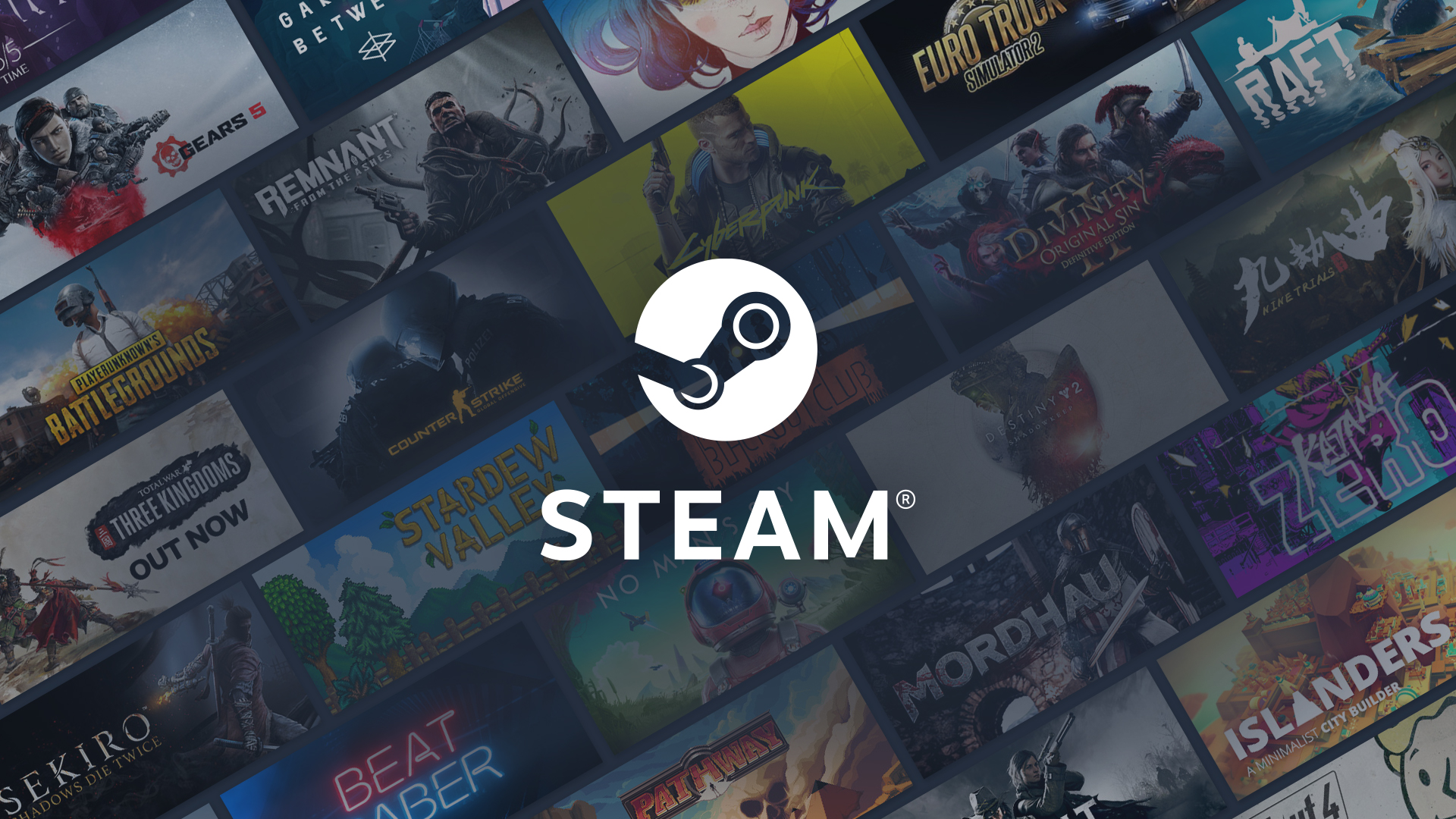Do you have a great game idea but don’t know how to pitch it to a publisher? Fear not, we’re here to help! This guide walk you through the process of pitching your game to a publisher, from start to finish.
f you are reading this, you probably have a game that you really care about. To you, it is the best game in the vast universe. Sure, you can see other great games, but you don’t care; your game is still the center of the universe.
However, when you start to see what is around you, you start to see that are enormous of games everywhere around. Each of them with its own unique features which are able of attracting people’s attention. .It’s not just about games, literally every product, service and cat image in the universe is competing for attention.
In the gaming industry: according to Polygon, the number of Steam games nearly doubled every year between 2014 and 2017, with more than 10 000 games released during 2021, which most of them wasn’t able to recover the investment made.
The PC market is hugely saturated and Steam is starting to look more like a mobile app store.
The console market which was still some oasis a couple of years ago, due to the concept of walled garden, will soon follow the trend as it is becoming easier and easier to publish on consoles too.

This market saturation is making it difficult for most AAA games with their top bugdets on marketing, let alone indie games, to get noticed. This is where the expertise and valuable network of publishers comes into play.
A good publisher can play a key role in navigating the vast universe and ensuring commercial success, while allowing you to focus on what matters most to you – making the best games.
So you’ve decided to work with a publisher? So how do you go about it? Here are some helpful tips on how to find a publisher, how to determine if their services meet your needs, and how to market your game.
Step 1: Do Your Research about the game publisher
Before you even start pitching your game to a publisher, it’s important to do your research. Find out as much information as you can about the publisher, their games, and their track record. This will help you prepare a strong pitch and make sure your game is a good fit for them.
How do I find potential publishers or a list of publishers?
First, look for games in a similar genre to your game and find out who the publishers are. Steam is a great resource for this. If a publisher has a website and you can’t see their contact information or portfolio of games that have been or will be released, that’s a danger sign and you probably shouldn’t work with that publisher.

That said, many of the big publishers don’t like being spammers with messages about their new games. In this case, you can stalk them on LinkedIn to find the right person or specific department (e.g. business development).
Other good places to do this are industry events and exhibitions. You can also work with a game broker who already has relationships with various publishers (although they also get a cut if they end up negotiating).
Understand the publisher’s services and your needs
Publishers have different capabilities and offer different opportunities for your game. Some publishers specialize in specific areas, such as production or release management, while others specialize in marketing and public relations. Others, offer 360-degree publishing (meaning they can do everything the big AAA game companies do).
Knowing what you’re looking for will help you introduce the right publishers to your next step.
Here are some examples of what publishers can help you with
- Funding. The most obvious benefit a large publisher can offer is an upfront payment, such as a minimum deposit. This type of funding allows for a wider variety of games and a smoother production process. Many smaller publishers cannot provide development funding.
- Release management. Most digital publishers offer some form of release management to manage the entire funnel of submitting games to the platform, including QA, ratings, and localization. It is important, with due diligence, to understand how many staff a publisher employs to perform release management and how much annual work it has in terms of the number of games being released. This is a major blind spot for many publishers, and having too many games to support but too few staff or too little experience can quickly develop into a messy situation with delayed releases and inefficiencies in the production pipeline.
- Marketing Most publishers offer some form of marketing, but some are limited in what they can do. For example, it is worth researching whether they only offer PR and community support, or whether they offer everything from website development, CMS/CRM, paid media, event management, trailer functions, art and content creation, etc. It is also important to investigate their global business reach, as many smaller publishers specialize in only one or two regions. Ask publishers how many marketing departments they have, how many marketing teams they have (excluding contractors and agencies), examples of marketing calendars and marketing reports.
- Sales. If you are launching a game on a digital platform, you will need to manage the entire digital sales and promotion lifecycle. This includes features and merchandising on each platform, including pre-order lists, ongoing sales promotions, seasonal discounts, off-platform marketing such as social media advertising and events, and trial and demo opportunities. Existing relationships with these platform partners are crucial, so make sure the publisher has connections. For example, Modus has weekly conference calls with the account managers of each platform to discuss the production and marketing schedule and the platform’s marketing opportunities. Unfortunately, the reality is that many publishers do not provide this kind of support or good relationship with their platforms and assume that their work is complete once the game goes live. Before signing a contract, make sure that the publisher tracks game sales frequently and provides a pre- and post-release marketing platform with no extra work.
- Physical Distribution and retail. Very few publishers, from regional to global, can offer physical releases. The advantages of retailing are the potential increase in revenue, expanded reach of the game, additional marketing support from the retailer, and the ability to create a physical collector’s edition that includes any add-ons that increase sales of the game, such as action figures or art books. modus is a Maximum Games Inc. As a division, it can distribute its physical product worldwide (except China, but that’s a separate article).
- Game Evaluation & Rating. Product ratings can be of great benefit to games, but only a few publishers are able to offer this service. Modus Games, for example, has built an internal infrastructure dedicated solely to collecting player feedback. This infrastructure consists of weekly contests, monthly focus groups, professional ratings from game journalists, mock reviews, contests on Discord, and regular milestone reviews.
If you are working on a game with multiplayer features or live services, the importance of community testing for alpha, beta and early access cannot be emphasized enough. A publisher that handles all these aspects on your behalf will allow you to focus on creating your game, without having to manage game reviews and other aspects of the game.
Once you have researched the list of publishers and evaluated the needs of your game and your team and the capabilities of the publisher, you are ready to make your launch.
Step 2: Prepare Your game Pitch outline
Your pitch should be concise and to the point. Include a general overview of your game and what makes it unique. Also include a description of the gameplay, and how it will be different from other games on the market. Finally, be sure to describe the publisher’s target audience and what they might enjoy about your game.

Step 3: Create you Pitch Deck
Your pitch deck should include a description of your game, the prototype or gameplay video, your outline of the game pitch, and any other relevant information. Make sure to highlight key points and examples that will help sell your game to the publisher.
If you’re new to pitching your game to publishers, don’t worry – we’ve got you covered! Our guide walks you through the entire process, from start to finish.
In preparation for pitching your game to potential publishers, you need to cover three bases: elevation pitch, milestone schedule, and prototype.
Raising pitch. The first step in pitching your game to potential publishers is to create a good one-sheet counter that is concise and simple. The content should include.
The past experience of your leadership team (even if it is the only one)
- A one-sentence description of your game, including your “hook” or your Unique Selling Proposition (USP). What is unique about your game beyond its features and technology?
- Brief synopsis of the game’s story
- Clear description of gameplay loops
- Short list of key features
- Brief list of comparable and competing titles
- General information about intended platforms, timing, costs, etc.
Finally, don’t forget to add what publishing services are required.
Think of this field as a single page containing all the high-level information about your game. This way, you can show that you have thought about and prepared all these necessary elements before submitting them to your publisher.
Milestone calendar. Prepare a detailed production and post-release schedule. Give a schedule of all the milestones of the vertical slice of the game to be released, including the costs incurred at each stage and the necessary cash flow If you are planning DLC, what is the timeline for that? Publishers need to have all this information to ensure that your game’s schedule
Step 4: Create A Prototype or Gameplay Video
Last but not least, you will need to prepare a prototype of your game to show off to publishers. If you don’t have a prototype that you are confident of putting on display, you are probably not ready to talk to a publisher. There are very few publishers who will be willing to sign a game based solely on a DRG or concept. In addition, you will want to be ready to send it to a publisher for their own evaluation. The prototype should stand on its own without demoing it.
If you don´t have a build then you can try a gameplay video of your game. This will help illustrate the concept and see if the publisher is interested. Make sure to include footage of the game in action, as well as graphics and screenshots that will help illustrate your points.
Your demo should be as complete and polished as possible. It should include a playable version of your game, as well as graphics and screenshots that will help illustrate your points. Make sure to include any footage of the game in action, to show off the concept and gameplay.
Step 5: Pitch Your Game
Once you have a complete pitch deck, demo, and overview of your game, it’s time to pitch your game to the publisher. Be sure to highlight key points and examples that will help sell your game to the publisher. If you are pitching an existing game, be sure to include footage of the game in action, as well as graphics and screenshots that will help illustrate your points.
Conclusions
Making a game is not easy, let alone trying to bring it to market in an oversaturated universe. Working with a publisher can help alleviate some of the burdens of publishing, so you can focus on building your game. Hopefully this article provides some insight into the process and allows you to ask the right questions when considering pitching your game to potential publishers.
Publishers are always on the lookout for new and exciting games. By following the steps in this guide, you will be able to pitch your game to a publisher with confidence and increase your chances of getting your game published.
Any doubt or any question? Don´t hesitate to leave it on our comments.
Want more interesting content on game development and its business, then visit our home page




